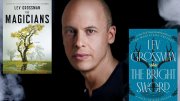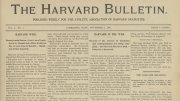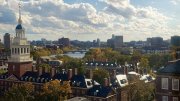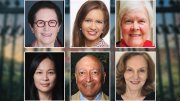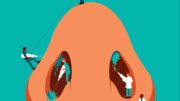The HAA Clubs and SIGs Committee Awards honor both individuals who provide exemplary service to those groups, and groups that have themselves organized exceptional programming. This year’s awards were presented to the following recipients at the HAA board of directors’ winter meeting on February 5.
Peter Mazareas ’73, of Nahant, Massachusetts. Starting in 2009, Mazareas became president of the Harvard Club of the North Shore and established a leadership team that developed a plan that has revitalized it. Activities that explore New England’s attractions and local landmarks, along with events featuring congressional leaders, have consistently drawn new members. Mazareas also created “Making the Curriculum Real,” a program that links alumni with children in local schools. As an HAA director for northern New England, Mazareas has also convened regional club events to foster a stronger alumni community.
Giulia Stellari ’03, of Port Jefferson, New York, and Nicole Buckley ’08, of Omaha. The alumnae founded the Harvard Alumni for Agriculture SIG in 2011; it has since grown to more than 300 members across 39 states and a dozen countries. Through a dedicated group of board members, the club has focused on investment, mentorship channels, networking, communications, fundraising, and philanthropy. Their efforts have led to a robust website; a webinar series featuring U.S. secretaries of agriculture and executives in the bioenergy and bioengineering fields; and involvement in the AgInvest Conference in New York. Students, faculty, alumni, and corporate mentors can now network and collaborate on agriculture-related projects, bolstering their own professional bonds along with their connection to the University.
Since its inception in 1977, the Harvard University Club of Houston has grown to include than 4,500 alumni, 450 of whom are recent graduates. Events cater to the diverse interests and fields represented and have recently included Global Networking Nights, an event with Jeremy Lin ’10 (now of the Los Angeles Lakers), tours of the Houston Federal Reserve Building, and “Back to School” picnics for members and new students, and their families. The club hosts Young Alumni Happy Hours and partnered with the Houston Yale Club for a celebratory event around The Game. Last October, the club also drew crowds for “Your Harvard: Texas,” a gala featuring alumni musicians and faculty panels on the arts, healthcare, energy policy, and the future of cities.
In the last three years, the Harvard Club of Hungary has become a vibrant organization offering unique events such as a reception at the U.S. Embassy in Budapest featuring Mallinckrodt professor of physics emeritus and Nobel laureate Roy J. Glauber. The club also focuses on strengthening relationships with alumni in neighboring European countries. Members helped organize the first Central European Harvard Club meeting in Belgrade, Serbia, and plan a Central European Harvard Ball. Moreover, it has joined with other Central European alumni in annual interactive video conferences with Harvard faculty members. A new initiative, “Back to Your School,” enables Hungarian club members to return to their secondary schools to discuss their experiences and the importance of higher education.
